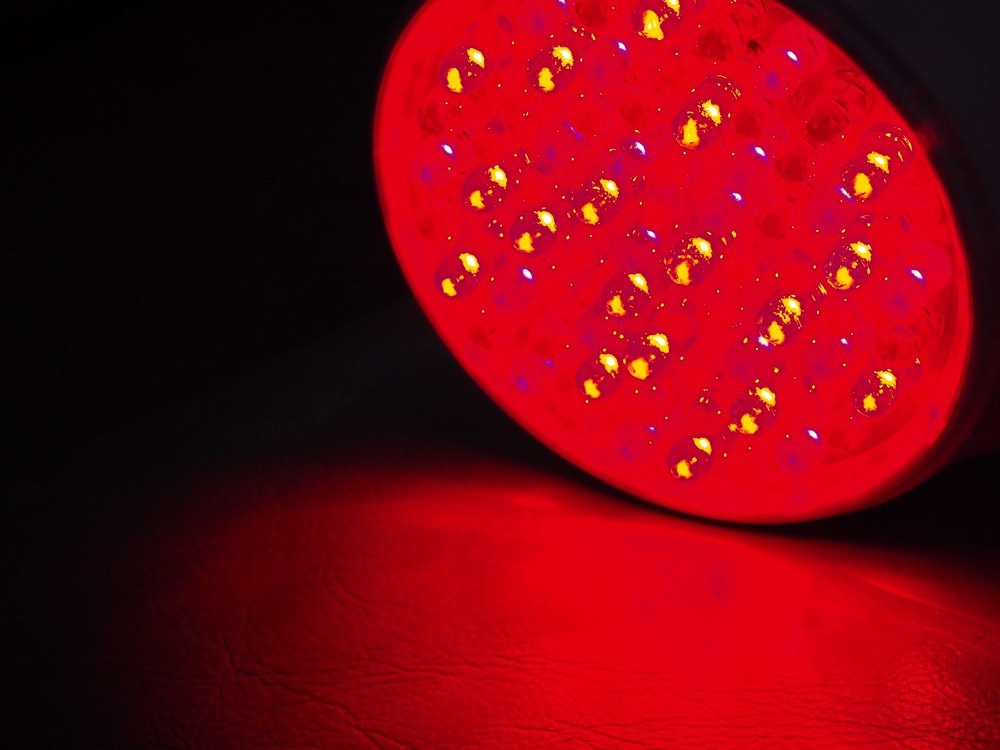Conventional infrared polarization detection and imaging systems are expensive and complex due to the rarity of existing absorber components with polarization selectivity in the long-wavelength infrared (LWIR) region.

Study: High-Performance Ultra-Broadband Absorber for Polarized Long-Wavelength Infrared Light Trapping. Image Credit: Pamela Carpenter/Shutterstock.com
Recent research published in Coatings suggests a brand-new, high-performance metamaterial absorber with ultra-broadband high polarization selectivity and absorption throughout the LWIR atmospheric window. The absorber can achieve an absorptance of 90% with a 4700 nm bandwidth owing to various surface plasmons combined with optical phonons.
The suggested absorber demonstrates precise polarization and selective absorption at the target wavelength. It can selectively absorb TM-polarized light while limiting the absorption of TE-polarized light. The developed metamaterial absorber also demonstrates impressive spectrum stability when the microstructure's geometrical parameters change, which is advantageous for manufacturing. The suggested ultra-thin absorber offers a viable method for streamlining LWIR imaging, detecting systems, and enhancing their functionality.
Characteristics of Metamaterials Based on Surface Plasmons
Periodic sub-wavelength microstructures are produced artificially to efficiently modify electromagnetic wave amplitude, phase, and polarization and obtain novel characteristics that are not possible with natural materials. Surface plasmons (SPs) can be divided into localized surface plasmons (LSPs) and propagating surface plasmons (PSPs). SPs are generally agitated when electromagnetic waves are acting on a microstructure.
The size, composition, and shape of the microstructures can alter the optical characteristics of SPs. Metamaterials based on SPs have several novel physical properties, including meta-lens, super-resolution, negative reflection, negative refraction, and a zero refractive index. In several areas, including optical stealth, optical communication, and holography, this is significant for the design of plasmonic devices.
Potential of Metamaterial Absorbers
Metamaterial absorbers can overcome the drawbacks of conventional absorbers and have the potential to open the door for promising applications in detectors, thermal imaging, thermal emitters, and energy harvesting by selectively absorbing incident electromagnetic waves at the nanoscale and modulating essential parameters such as the response band, intensity, and transmittance.
Limitation of Design of Metamaterial Absorbers
The absorptance of metamaterial absorbers can be improved by designing several structures, such as metal gratings, nanoparticles, multilayer structures, nanoholes, and nanocubes. The current designs fall short of the increasing need for polarization imaging because they only concentrate on widening the absorption peak.
The transmission axes of each polarizer are positioned at 0°, 45°, 90°, and 135° in traditional polarization imaging techniques. Adding more polarizers ultimately makes the optical system large and complex, increasing expenses and impairing the detector's performance.
Development of High-Performance Metamaterial Absorber
An innovative, high-performance metamaterial absorber is suggested by Xiong et al. in this study. The proposed absorber can concurrently accomplish ultra-broadband high polarization selectivity and absorption across the whole LWIR atmospheric window, in contrast to traditional absorbers.
The researchers produced a metal-insulator-metal (MIM) absorber with rough resonators and used the high optical loss metal chromium (Cr) for the base to accomplish relatively narrow single-peak TM-polarized light absorption.
According to Xiong et al., the high-performance metamaterial absorber possesses the localized surface plasmon resonance (LSPR) and propagating surface plasmon resonance (PSPR) phenomena. The researchers also investigated a high-performance absorber made of silicon nitride (Si3N4) and silicon with a three-layer stack dielectric (Si3N4).
As the PSPs and LSPs induced by the resonance of the MIM absorber are connected to the optical phonons of dielectrics, it demonstrated high absorption, ultra-broadband, and polarization selectivity. The researchers discovered that the absorber had excellent spectral stability when changing the microstructure's geometrical characteristics, which is advantageous for manufacturing.
Research Findings
In this study, the researchers successfully exhibited a brand-new, high-performance metamaterial absorber that shows ultra-broadband high absorption and polarization selectivity and is based on high-loss metals and high-dispersion dielectrics. Particularly, the absorber produces an absorption bandwidth of 4750 nm in the LWIR atmospheric window with absorption of above 90% as the excited LSPs and PSPs are connected to optical phonons. The suggested absorber exhibits exceptional spectrum stability, allowing for small manufacturing defects while maintaining performance.
The proposed metamaterial absorber has a wavelength of 800 nm, which significantly improves detection performance in terms of application and raises processing precision requirements in terms of fabrication. In the future, high-precision metamaterial absorbers can be manufactured cheaply. The absorber is perfect for integration with detectors due to its precise polarization selectivity and ultra-thin thickness in future practical applications. For gas detection, biosensors, and medical diagnostics, it can simultaneously simplify imaging systems and enhance detection performance.
Reference
Xiong, Y., Liu, X., Zhang, J., Wang, X., Wang, X., Gao, J., & Yang, H. (2022). High-Performance Ultra-Broadband Absorber for Polarized Long-Wavelength Infrared Light Trapping. Coatings, 12(8), 1194. https://www.mdpi.com/2079-6412/12/8/1194/htm
Disclaimer: The views expressed here are those of the author expressed in their private capacity and do not necessarily represent the views of AZoM.com Limited T/A AZoNetwork the owner and operator of this website. This disclaimer forms part of the Terms and conditions of use of this website.